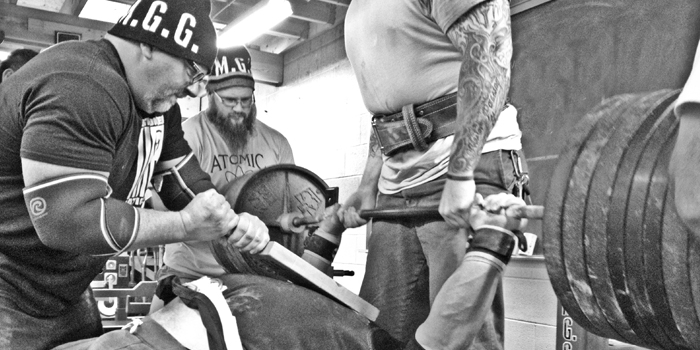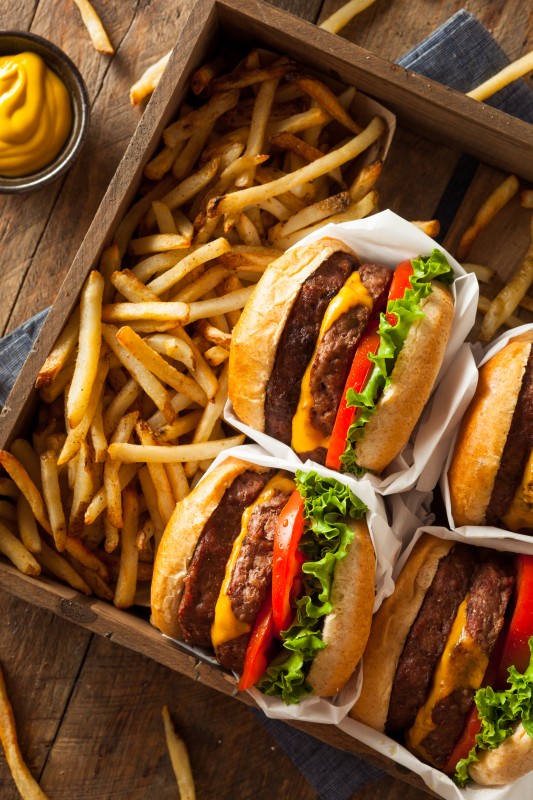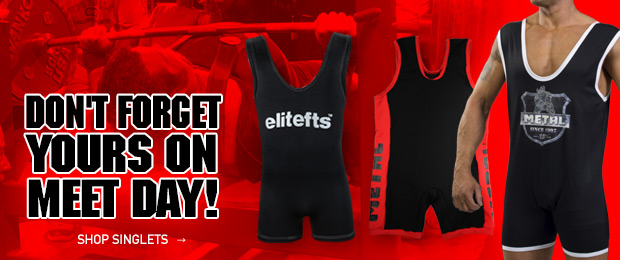
Saturday Night Live, a show steeped in political comedy where Number 45 is played by actor Alec Baldwin. For some, they remember the original not-ready-for-primetime cast with members like the amazingly talented Gilda Radner and Dan Aykroyd, and where Number 38, Gerald Ford, was famously portrayed by the legendary Chevy Chase.
Somewhere lodged in between these time periods and political figures was a Saturday Night Live cast with talents such as Farley, Sandler, and Spade. During that period on the show, David Spade had a recurring sketch called “The Hollywood Minute.” “The Hollywood Minute” segment took place during “The Weekend Update” news sketch.
RECENT: The Time In-Between Sets Matters
During Spade’s “The Hollywood Minute,” he would take a look at something current in the culture and juxtapose it with something more historical. For example, Spade would display a photo (remember, this was back in 1993) on the show of singer/songwriter Jackson Browne. Spade’s comment was something like, “Hey, Jackson Browne, 1973 called, and they want your head back,” of course referring to Jackson’s haircut that he has exactly maintained for his entire career of albums, spanning from 1972 to his latest album, now download, that came out in 2014 — the same haircut he had for a 42-year musical career.
Spade’s comedy aside, the idea of looking back at something that has spanned a few decades can reveal that something current can have lasting relevance. Or on the other hand, that something current has an irrelevance today, and perhaps was something that never made sense in the first place.
This exercise of comparing something done then with something done now is a way to help measure the worth, value, or effectiveness of something. Or it can measure the lack of worth, value, or effectiveness of something.
Reflecting back several decades, one can look at what was once a current and freshly filmed cigarette ad where the doctor in the commercial touts how wonderful his brand of smokes is.
Reflecting back at that and juxtaposing it with today, you think to yourself, “How did that commercial ever get made? Who thought this was a good idea?”
With regard to the cigarette ads of that time, one can plead the fifth and say, “Hey, they just didn’t know back then that this was really bad for you.” That could possibly be a true statement, but what is the excuse for those who begin smoking now, in a time where there is irrefutable scientific data showing the negative effects of cigarette smoking and one’s health? What is that phenomenon known as when people do something that is just not healthy, but they do it regardless just because it might have been done in the past? Is it plain old denial, or a disbelief in the science, or that through luck or magic, it will be a different result for them?
So, borrowing from David Spade’s “The Hollywood Minute,” and that unnamed phenomenon of doing something that is just not worth doing, we say to those new to intermediate powerlifters out there, “The ‘90s called, and it wants its diet back!”
Having powerlifted internationally in the 1990s as well as the early 2000s, I have a little perspective of why some things happened then and are now being emulated without all of the historical contexts by today’s lifters. Although there are so many drawbacks to growing older, the obvious being closer to one’s final and inevitable rep, there are some benefits as well, with one of those benefits being the benefit of experience and perspective and with perspective can come to a context.
I recall training with weights in the 1980s with lifters much older than I was. Looking back at my old videotapes and Polaroid One-Step photos of these guys, they were put together with shoulders like cannonballs, huge deadlifting built backs, and abs that were muscular, utilitarian, powerful, and looked like the back of a deeply carved tortoiseshell.
The guys I trained with were as strong as an ox and as muscular as the original classic era bodybuilders with strength and power to spare. I remember going out to eat with these guys, and they ate as big as they squatted, but what they didn’t do was mistake more for better or quantity over actual quality.
Looking back, none of these guys had sloppy guts, and if the food wasn’t going to help their body to gain additional muscularity, additional strength, and increased power, it wasn’t going into their mouths. Although they could eat a ton, and they did, their meals were largely comprised of steak, eggs, rice or potato, some type of green veggies, milk, and coffee, as well as the protein powder and other supplements in vogue during that era — mainly egg and milk protein powders and desiccated liver tablets.
RELATED: A Snapshot of My Off-Season Diet — Health, Recovery, and Efficiency
As the lifting gear changed from that first generation stuff, which honestly is almost indistinguishable from those rubbery singlets of today, to the canvas and denim of the 1990s, there was an advantage to the gear fitting tighter. This is when I began to see a change from eating to feed the body to eating to fill out the gear.
Fast food has been around since the 1950s, but in my experience, it wasn’t until the 1990s when lifting gear began to really help put up a larger total that I saw this type of food being used as a potential tool for a larger total. And with this equipment change, so changed many lifters’ idea of consumption. The change went to a “more is better” and “quantity over quality” approach, which was used to fill out those suits out and fill them out quickly.
With first generation shirts, a big chest equaled a big bench. Prior to these shirts, the deadlift would win or lose the meet, as one does not get a great deal out of the gear with regard to a deadlift. So a 600-pound puller could pull 600 pounds raw and a bit more with their deadlift suit or erector shirt. But a 500-pound bencher could now add 100 to 200 pounds on their total by pressing 700 pounds, so totals changed and strategies had to change, and for the bencher with a garbage deadlift, suddenly, they were on the hunt, and a big belly and body to fill the gear was an advantage, as their deadlift was already poor to begin with.
For these reasons in the 1990s, as the canvas shirt transformed into the denim shirt then into the precursor to the first poly shirts, a big belly became the focus for a big bench as there wasn’t a chest plate in the shirt to load, but merely a really tight closed back shirt that a belly and a layer of fat helped to make tighter.
Eating calories for the mere sake of calories, regardless of grams of protein, was now in vogue as the race for bigger numbers in this new gear was on, and the staple diet of steak(s), eggs, rice, spinach, and the like disappeared faster than you can say, “super-size me.”
“Cleaner” meals disappeared, along with the lifter’s abilities to see definitive abdominals and see below their waistline. Nutrients like magnesium, responsible for mitochondrial production of ATP, took a distant second to large fries, preservative-laden, what-used-to-be-beef burgers and what would never pass the FDA’s definition of food if the food industry was actually concerned with health rather than profit.
I saw this first-hand, and I saw bench numbers climb. For a single year, I was caught up in the chase myself. From a skirt steak, eggs, oatmeal, some smoked salmon, green leafy stuff, and a potato, I tried the stack of pancakes, a plate of bacon, loads of French toast, eggs with hash browns, coffee, and washed that all down with a double serving of biscuits and gravy and a strawberry shake.

Brent Hofacker © 123rf.com
That year, I fit in my Frantz canvas suit like 15 pounds of sausage in a five-pound casing, but that year was also the year I felt the worst.
READ MORE: The Influence of Supernormal Stimuli on the Evolution of Bodybuilding
My deadlift actually went down, and I had eaten myself into a weight class that was comprised of much taller and larger-framed powerlifters, some of who were on an equally horrid “see-food, eat-food” diet, but also others who had earned that larger weight class by putting on quality muscle through quality nutrition, patience, and time.
Those who built themselves into that larger weight class were just plain old in better condition and more powerful than those who strapped on the fast food feedbag lifters. Their self-discipline in the kitchen made all the difference on the competition platform. These guys looked like the guys I had trained with years prior. They wanted the numbers just like the super-sized eating guys but were just willing and disciplined enough to wait for it and work for it. The difference was stark.
Though some equate a cleaner diet with a bodybuilding diet, their equation is short-sighted at best. Some powerlifters during that era successfully avoiding the allure of the “see-food, eat-food” diet and realized cleaner doesn’t mean chicken, rice cakes, and broccoli. Cleaner to those powerlifters, those still in the game from the decade prior, meant steak, eggs, oatmeal, milk, spinach, and lots and lots of it.
“Cleaner” doesn’t mean a lack of calories or meals totally devoid of a treat now and again. “Cleaner” was just a name given by lifters eating garbage to these highly successful lifters who avoided not just empty calories, but the calories full of preservatives and lacking in the quality protein and nutrients that are required to build a powerlifter’s muscularity, strength, and power as they moved into the next weight class through solid muscle versus sodium laden water retention.
Looking back, the 1990s was an era of powerlifting that was off the charts with intensity and lifters were ravenous for numbers for numbers' sake, not for numbers of followers or for 10%-off discount codes or “likes” on social media. In many ways, 1990s powerlifting was as pure a sport as 1970s bodybuilding was. It was a subculture within a subculture, and because of that and its authenticity, because of the caliber of lifters at a meet (a meet of 100 killers versus a meet today of 300 lifters with 200 on the phone in-between attempts), that lifestyle of eating wrongly became synonymous with that era of awe-inspiring powerlifting.
The one part of that era that missed the mark was going off the tried and true path of feeding the machine because the body system of an athlete or a powerlifter is a machine. Feeding the machine morphed into gumming up the engine with a focus solely on calorie count versus taking in the required calories comprised of what the machine truly needs to consume for sake of performance. This took place for a short amount of time, but the legend of it has been emulated by the misguided and misinformed and that has breathed into the myth of this being the lifestyle for all powerlifters in that golden era of number chasing.
What I am very happy to see is the likes of lifters with a good chunk of road under their belts, like guys like Stan Efferding talking about nutrients for performance versus eating garbage just to fill a suit, or for the short-term leverage advantage, they will end up losing as their health issues slowly but eventually mount.
LISTEN: A Bodybuilding Rewind with Lee Haney and Dr. Fred Hatfield
The 1990s diet was a very short-term method that worked until it didn’t. And anyone who is not on a death march and has eaten themselves into a larger weight class in this fast food versus grass-fed beef type of muscular way will tell that to your face. If they are truly being honest with themselves, they would quickly inform you that the method quickly reaches a point of diminishing returns, and by the time the lifter realizes this, that time has already been wasted. Then it is more time spent dropping the garbage weight versus having stayed the course from day one.
Having been in this game since my first meet in 1989, I have seen lifters fall into this cycle over and over and over again, even though that era has come and gone, and these lifters have yet to compete on a regular basis and still have technical issues.
Some catch on and quickly figure out that more, with regard to empty calories, is not better, Oreos are not a food group, and quality food easily out-performs empty quantity. Others are not so quick on the draw and they pay for it in lackluster performances on the platform, and waning health in the form of high blood pressure, which is nothing to play around with — that, and injuries.
For those who don’t think there is a correlation between eating garbage and increased injury potential, they need to revisit their college biology and anatomy curriculum because the extreme demands placed on the tendons and muscles via powerlifting requires adequate sleep and nutrient-rich foods. This is science, this is chemistry, and this is fact. This has been proven time and time again, and those telling you otherwise are the same lifters that are here today and gone later that day.
Congratulations to those fellas, as they have just confused irresponsible and shortsighted for hardcore. Hardcore is the self-discipline it takes to stay the long course and see powerlifting for what it really is, a journey of the self. Hardcore is the ability to constantly chip away an ever-larger total, and do it, as Clay Brandenburg would say, “Brick by brick.”
On your journey in this sport, seekers of secrets and shortcuts will always be seekers of secrets and shortcuts. And they will always be a day late and a dollar short, as there are no fast-food super-sized secret methods, programs, or diets.
Hard work, adequate sleep, and quality nutrition are the staples to success, and when combined with intensity, diligence, technical prowess, an indomitable spirit, and love of the weights, these things comprise the not-so-secret secrets that have been laid out in plain sight all along.
Wishing you the best in your training and meet prep. Ever onward.











1 Comment